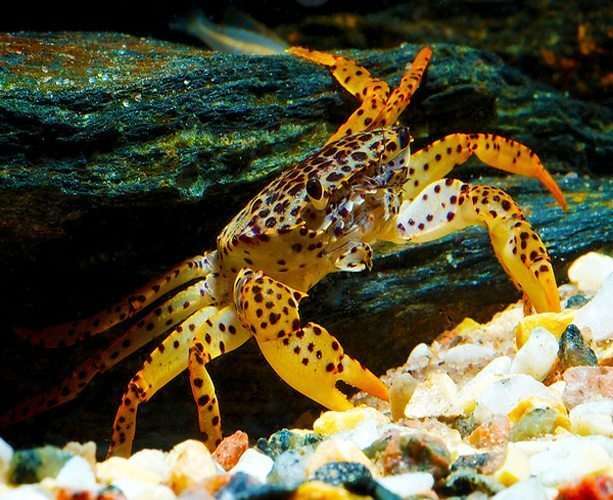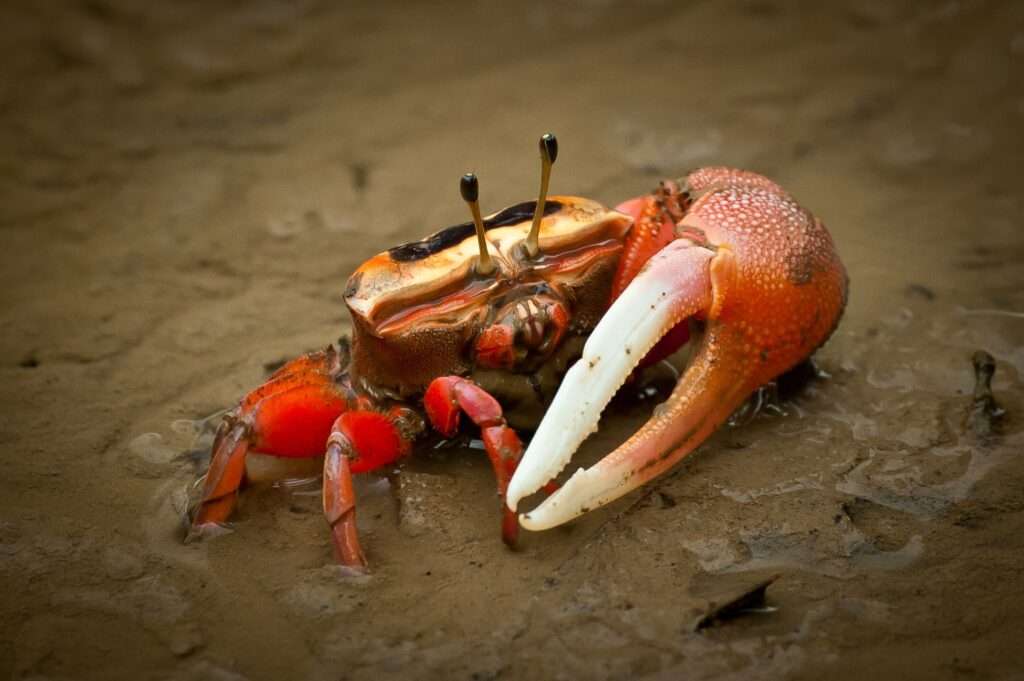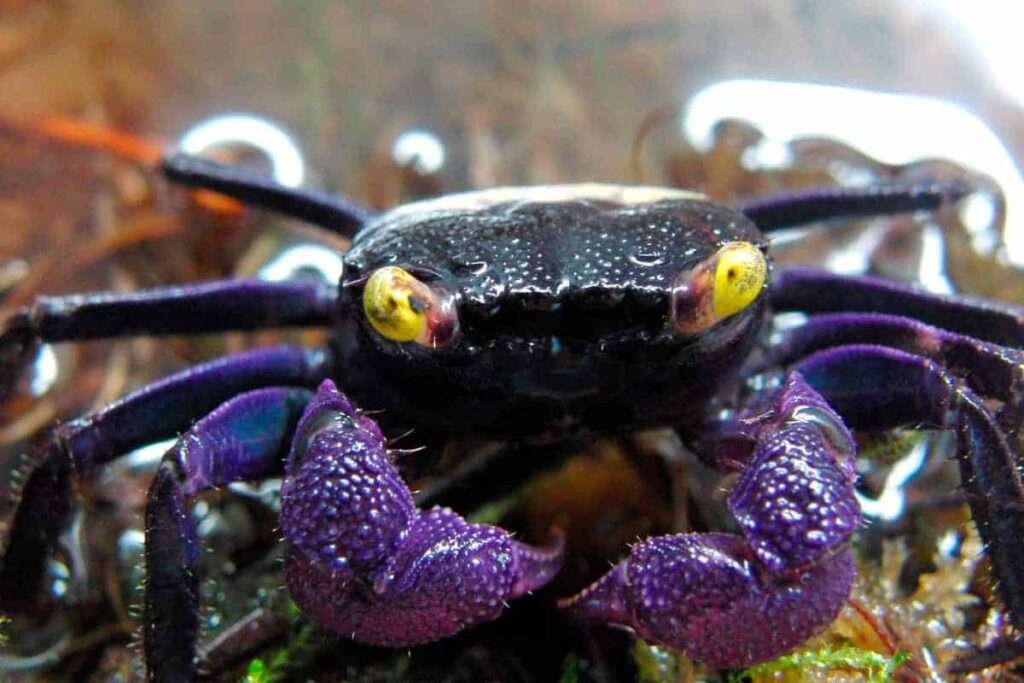
Even while fish are fantastic, some folks prefer something a little different. Crabs have an entirely different look, and the Panther Crab is one of the most alluring. These creatures will capture your attention with their unusual appearance.
They are also simple to maintain, which tempts beginners to choose them. However, you must exercise caution around their aggression, which emphasizes the significance of choosing the proper tank design.
Panther crabs are so named because of the orange and black spots on their shells. They also have a character that is a little bit violent, like the Fiddler crab, comparable to that of wild cats.
Appearance
The look of this species is stunning. They are incredibly lovely creatures that rival even the most exquisite fish in beauty. Once you see them, it’s hard not to want to buy some.
Their common names already reveal how they appear. Like a Panther or a Leopard, they have little brown spots covering their entire body, including their legs and claws.
Habitat
Panther Crabs are only naturally found in populations on the Indonesian island of Sulawesi. With such a small geographic distribution, Sulawesi must have ideal environmental conditions for this species to thrive. To maintain the health of your crabs, you must as precisely reproduce these conditions as you can.
Lake Matano is the ideal location to model because it has the largest population.
Warm temperatures can be found in the tropical ocean here. It would also have a mild acidity. There would be lots of sunlight and little water movement.
The lake’s bottom would be sandy but littered with objects like rocks and wood. The caves that the debris produces would be claimed by Panther Crabs as their domain.
Feed
As they explore the aquarium, these scavengers will consume anything they come across. Since they are omnivores, they will happily eat both plants and meat.
Since omnivores can consume a wide variety of foods with diverse nutritional values, it is simple to provide them with a variety of nutrients. To maintain them as healthy as possible, try to alter their diet.
Foods that are dried are quite handy. Algae wafers, pellets, and flakes will all be well received. However, because of the production process, they have a low nutritional value; thus, you should add frozen or live foods to them.
Bloodworms and brine shrimp are a couple of excellent examples.
You can use finely chopped green veggies from your kitchen to further vary their diet. Spinach, cucumber, and zucchini will be enjoyed as a pleasure.
As Pet

Housing and care
Although many sources claim that Panther crabs are entirely aquatic, it is still a good idea to offer them access to some land area, such as rocks or wood that protrude from the water, so they have the choice to leave if they so desire. Because these crabs live on the shore in the wild, an amphibious environment is optimal for them. I’ll say it again: this is not required.
Place of Hiding
For your crabs to feel secure, just like many other freshwater crab species, it is crucial to provide hiding places. A safe refuge is crucial for your Panther crab’s surroundings because these crabs can be quite territorial and are extremely vulnerable when they are molting. The Panther crab needs a lot of room in their aquarium because they are rather huge for freshwater crabs—roughly thirty-two inches or eighty centimeters per animal. Panther crab violence can also be reduced by employing large tanks, which is crucial when keeping several males in one tank.
Parameters for Water
A well-cycled tank environment should as closely as possible resemble Lake Matano’s parameters. Temperature should be between 27 and 31 degrees Celsius, and the pH level should be at or near 8.0. (Or 80 – 88 degrees Fahrenheit).
Table





